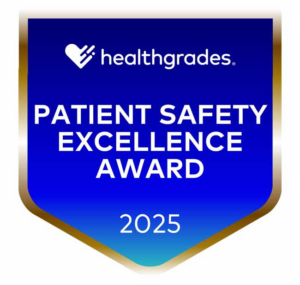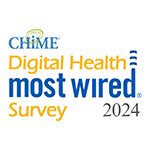Pain injections
If you’re seeking a minimally invasive solution to target pain, pain injections could make a significant impact. Henry Community Health offers a range of injections to reduce pain and inflammation.
Finding the right solution for chronic pain can be exhausting. While basic treatments like nonsteroidal anti-inflammatory drugs (NSAIDs) and physical therapy can help, they might not deliver the results you’re hoping for. More invasive options, like major surgery, can be intimidating and often involve lengthy recovery times. Pain management injections could be the right alternative for you.
Designations
- Healthgrades 2025 Patient Safety Excellence Award™
- CHIME Digital Health Most Wired Awards, Acute & Ambulatory, 2020–2024



Conditions
Pain has a variety of sources, and injections can be used to target a wide range of spine and pain conditions. This flexible treatment option can benefit patients with:
- Arthritis
- Back pain
- Herniated discs
- Joint pain
- Knee pain
- Migraines
- Neck pain
- Tennis elbow
- And more…
Pain injection treatments
BOTOX® for migraines
BOTOX® is known by most as a solution for unwanted wrinkles, but it has far more applications that can truly make a difference in patients’ lives. It has become an excellent treatment option for chronic migraines. Its overall effects on muscles have made it an effective and innovative solution.
Epidural steroid injections
Epidural steroid injections are often used to target back pain and sometimes hip pain. They are delivered into the area surrounding your spinal cord known as the epidural space. The provider will use a tool, likely a live X-ray, to guide a needle with the medication into the appropriate area of the spine. The medication is then released into the epidural space.
Joint injections
Joint injections both reduce pain and inflammation in the joint area targeted by your provider. The medication is delivered through a needle into the joint, ligaments, and/or tendons affected. The procedure will be repeated as needed in any additional areas. There are different types of joint injections, so your provider will review which option is best for you.
Trigger point injections
Trigger point injections treat areas where knots of muscle have formed from ongoing tension. These trigger points may sometimes be felt through the skin. Trigger point injections can be used in many areas of the body. A small needle injects medication into the affected area. This will make the trigger point inactive, which reduces pain. The procedure can be repeated in other areas as needed.
FAQs about pain injections
After you and your provider decide on pain management injections, you’ll work together to go over the details of the procedure, including benefits. Pain injections can:
- Reduce symptoms
- Offer diagnostic insights
- Reduce swelling and inflammation
- Work in tandem with other treatments
- Offer long-lasting pain relief
- Reduce reliance on other medications
- Minimize risks associated with other procedures
As outpatient procedures, pain management injections also offer shorter treatment and recovery times.
As with any injection, there is a chance of irritation or pain at the injection site, but this will fade in the majority of cases. The effects of pain injections can vary in length. Some patients report initial pain relief for multiple weeks, but repeated injection therapy can lead to months or over a year of pain reduction. Your provider will review potential outcomes and other ongoing treatments that may complement your injections, such as physical therapy or nutritional adjustments.
We have many options for pain management. Sometimes, patients may need more than one treatment to optimize their outcome to the best of our ability. We usually recommend a follow up appointment to further discuss treatment options if initial treatment does not help.
We accept self referrals and referrals on a case by case basis. Usually, this depends on previous work up from other providers which includes physical therapy, imaging and appropriate initial treatments.
If you need a referral form, check out our referral page.
This is based on a case by case basis and if procedures are performed on the patient, we will outline appropriate follow up visits for you at your visit.
- Medical records regarding your condition (if not already provided by your referring provider)
- Insurance card
- List of current medications
- Any previous imaging (X-rays, CT scans, or MRIs) from providers outside of HCH
- Any splints or braces related to the area we’ll be examining



